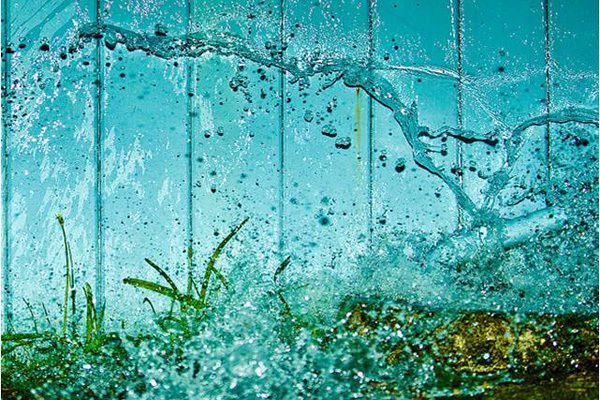Wall coverings that look sensational and meet strict environmental standards
The world is changing – people are becoming increasingly aware of the impact they are having on our planet as the population swells and many countries strive to improve their standard of living. Environmental awareness is growing at a quick pace and technology, traditionally viewed as both friend and foe, holds the key to turning things around for the better.
The best way to make a contribution in fashion is to promote the idea that a fundamental interest in preserving the environment is itself fashionable. Giorgio Armani

Fortunately, the wall covering industry takes a very serious perspective on the environmental impact of its products. European manufacturers in particular have worked hard over the years to overcome the various challenges that our industry presents when it comes to environmental responsibility.
Our German suppliers have really stepped up to the plate, producing some of the finest wall coverings in the world whilst observing strict environmental standards. Their commitment is inspiring and they continue to produce world class products that conform to the rules and regulations set down in European CE standards and the RAL Quality Seal.
What are European CE standards?
In 1985, the European Community (EC) began to develop a universal marking requirement known as the CE Marking System (CE is a French acronym for Conformity Assessment). The European Community (EC) has since been replaced by the European Union (EU), but the regime of testing and certification continues today. A new CE standard was introduced in Dec 2009, giving consumers a reliable assurance that the goods they buy are safe not only for themselves, but for the environment as a whole. Before affixing the CE mark, the manufacturer must fill out a legal document called the Declaration of Conformity. This document states, among other things, what applicable EU product standards or test methods have been met.
What is the RAL Quality Seal?
In 1991, more than 60 wallpaper manufacturers united in a quality assurance association to satisfy the high demands of the consumer in respect to ecological compatibility. Today, the RAL is essentially a list of environmental standards that must be met before the industry issues the special RAL-GZ-479 eco-label. Manufacturers of wall coverings that bear this eco-label must guarantee that these products are relatively safe both during and after hanging. Let’s get technical for a moment, because many of our readers want to ensure that the products they hang in their residential or commercial space really do hit the mark environmentally. Wallpapers with the RAL quality mark must meet the following requirements:
- No provable vinyl chloride
- Formaldehyde is far below the legally accepted level
- No pigments containing heavy metal
- No lead or cadmium as stabilisers in structured wallpapers
- No Chloroflourocarbons (CFC’s)
- No chlorinated solvents or solvents containing aromatics substances
- No easily volatile softeners (VOC)
These requirements are constantly being updated by neutral bodies using the most up-to-date analytical methods. Only those products that meet these high demands are entitled to bear the RAL quality mark. So if you’re thinking about making big changes to your interior design without damaging the environment, check out the exciting range of eco-friendly wall coverings we have sourced from our German suppliers Rasch, Marburg and Belacol. Give us a call today on (03) 9335 6711 or visit our residential design studio.
